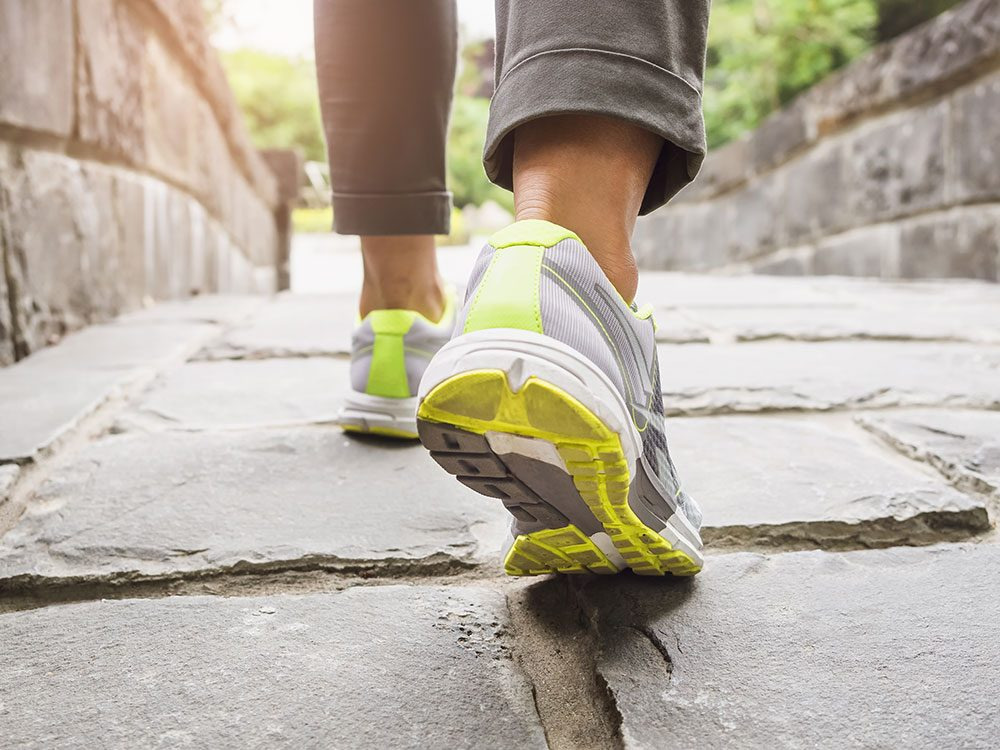Walking 10,000 steps a day has become a popular fitness goal. Here are just a few of the health benefits you’ll experience once you start moving more.
Considering walking 10,000 steps a day?
Walking 10,000 steps a day has become a popular fitness goal. Though it’s certainly not the be all and end all of fitness, research has shown that the more steps you take in a day, the better.

Aiming to walk 10,000 steps a day (or any number that presents a challenge based on your current activity level), is a great way to motivate yourself to move more and to interrupt the time you spend sitting. As a result, it can have a tremendous impact on almost every part of your body. Here are 10 of the biggest health benefits you can expect from walking 10,000 steps a day.
Walking 10,000 steps a day can boost your heart health
Regular physical activity helps increase the amount of oxygenated blood being sent to your muscles—the fitter you are, the more easily this happens, and the harder you will be able to work out.
It will strengthen your lungs

Moving each day helps strengthen your lungs and surrounding muscles. As the rate and volume of oxygen you inhale goes up, so does your body’s ability to use it efficiently (a measurement referred to as your “VO2 max”). The fitter you get, the higher your VO2 max.
It improves your concentration

Physical activity boosts the release of feel-good hormones (like endorphins) and also increases blood flow to the brain, which results in improved cognitive function. Not only do you feel less stressed and anxious when you regularly move, but you are also working toward improving your creativity, productivity and concentration.
It strengthens your bones

Physical activity (particularly weight-bearing exercises) places extra stress on your bones, which helps improve their density and lowers your risk for osteoporosis later in life. Walking, and better yet running, are great places to start.
Walking 10,000 steps a day builds muscle
Daily physical activity causes tiny tears in your muscles, which in turn, leads to increased muscle growth and strength.
It helps stabilize your blood sugar
When you’re physically active, your muscles use more of the glucose in your bloodstream. Activity also helps the insulin in your body work more efficiently.
It can help lower blood pressure

Physical activity is important for preventing and managing high blood pressure. Getting in your daily steps can help reduce the stiffness of your vessels, allowing blood to flow more freely.
It improves flexibility
Physical activity helps improve your flexibility, which in turn, helps improve posture, reduces risk for injury, and also decreases the number of aches and pains you feel during the day.
It boosts your energy levels
Physical activity is a great way to boost energy levels and fight fatigue as it strengthens the heart and improves circulation.
It improves your mood
Physical activity triggers the release of key neurotransmitters like endorphins, serotonin and dopamine, all of which play key roles in mood control.
Source: Reader’s Digest CANADA
PHOTOS: SHUTTERSTOCK

Coffee Time journal
Твой журнал на каждый день!






